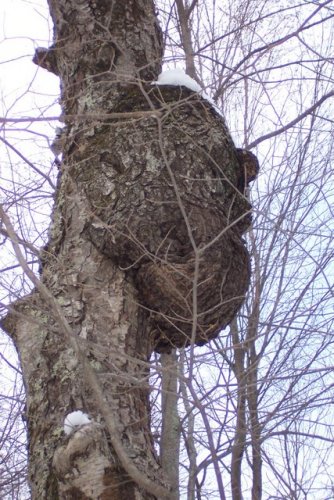We may have lost the Old Man of the Mountain but we still have a “Man in the Tree.”
One day, when I was hiking through the woods in the Concord area, I saw on the trunk of a tree a huge burl in the shape of a man's head. While it is the largest burl I have ever seen during my sauntering in the New England forests, it is small compared to the one that is over 6 feet tall in Tamworth, Australia.
Burls are the large rounded tumor-like forms on the trunks of trees which are thought to be caused by the tree's response to an irritation from fungus, bacteria or insects. They are erratic growth stimulated by the tree to isolate or contain an injury. These swollen sporadic outgrowths are treasured by craftsmen as forest jewels for their irregularity of colors and their beautiful grain patterns.
Highly prized by furniture makers, artists and sculptors, burls can be hollowed out to form bowls or, when sliced, make exotic wood veneers. The explosion of growth in the burl produces all kinds of twists, swirls and knots in the wood fiber and is used with great effect in woodworking. The spectacular configuration of the compressed grain in the burl enhances the uniqueness of the wood.
Bowls made from burls have their own distinctive elegance and charm. No two are alike. A bowl constructed from rimu wood sold for $6,125 in New Zealand dollars. The burl is an excellent example of beauty in nature that stressful situations can generate, like a pearl in an oyster or a man's head in a tree.









